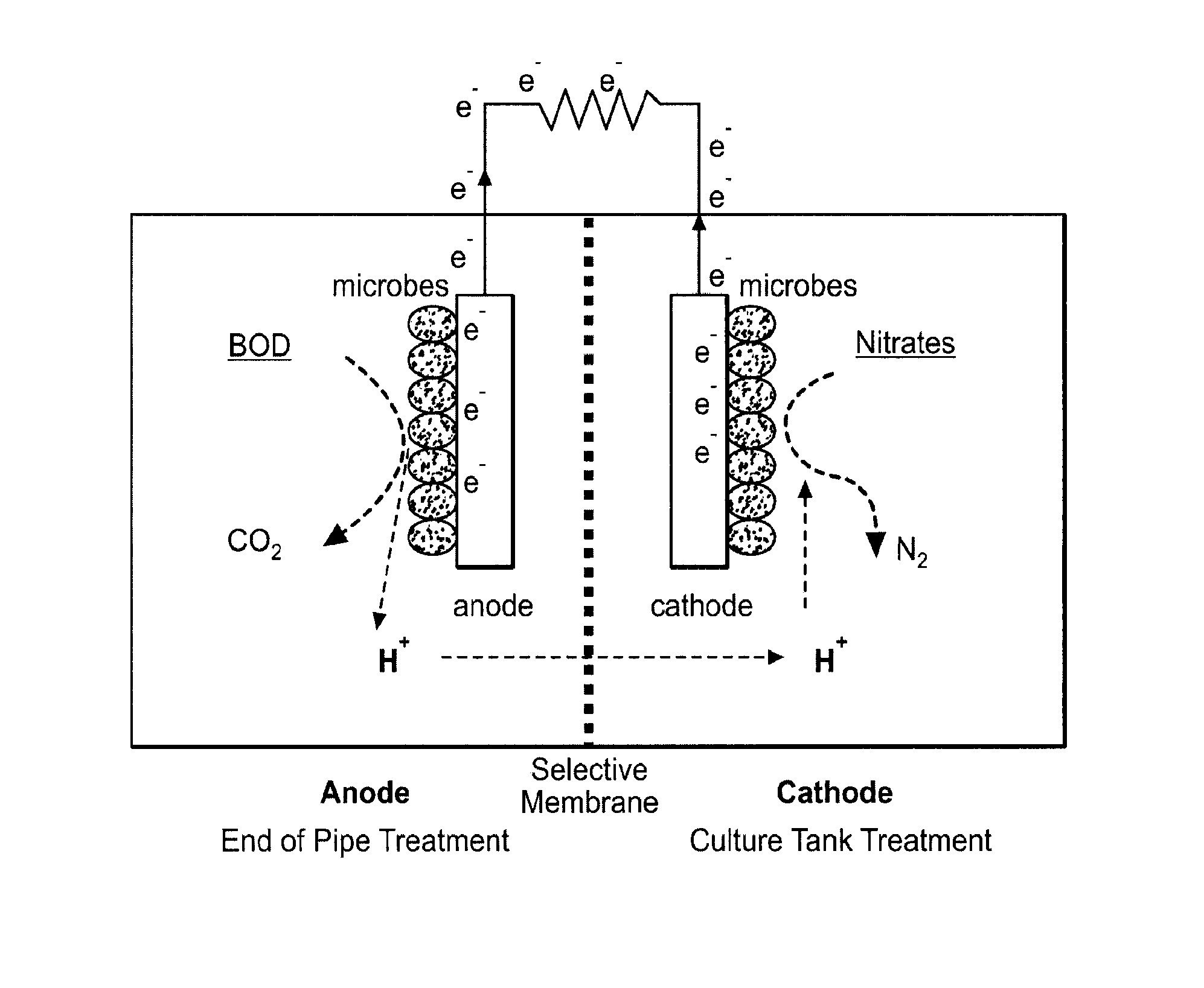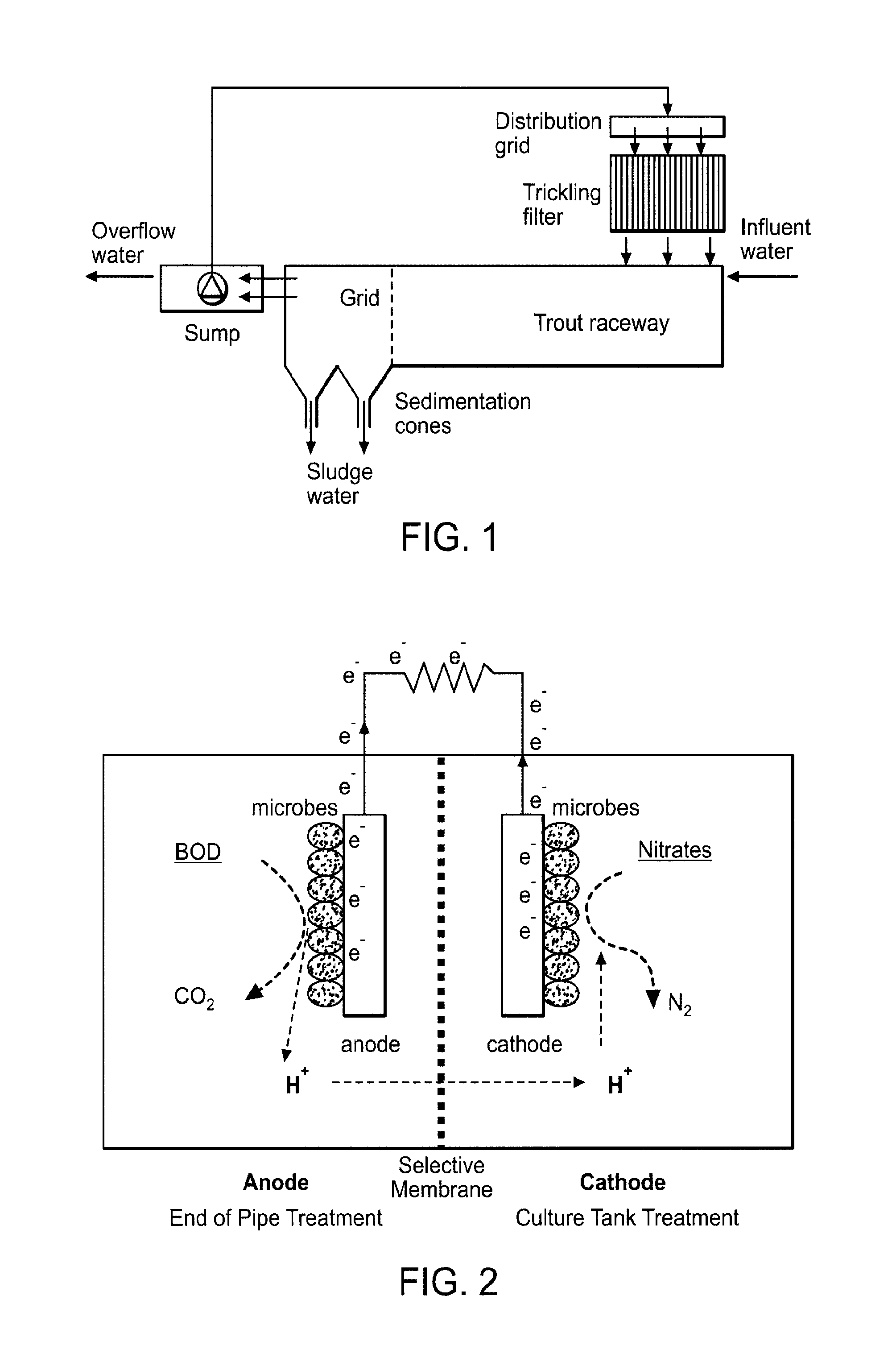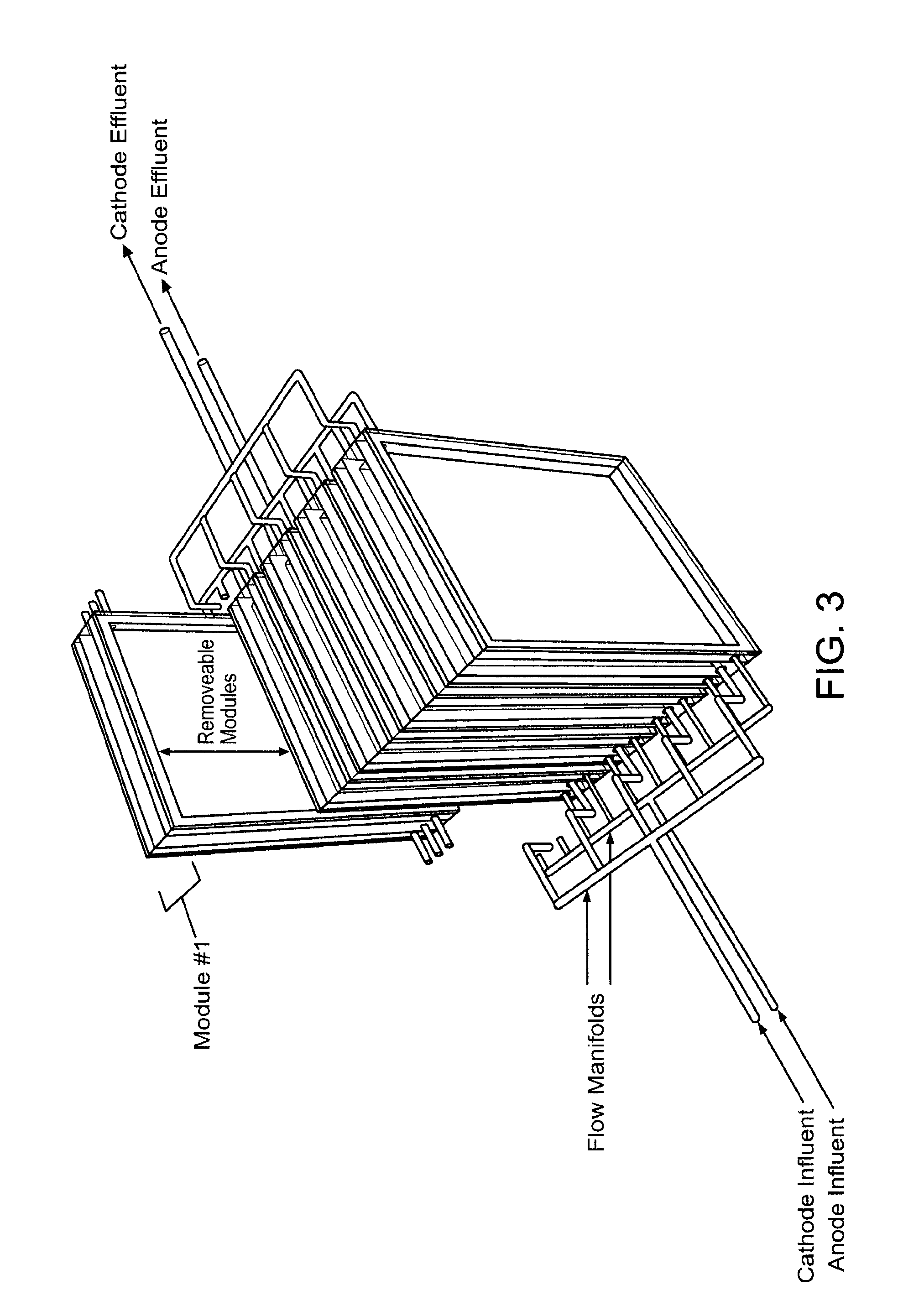Denitrification and ph control using bio-electrochemical systems
a bioelectrochemical and ph control technology, applied in biological water/sewage treatment, other chemical processes, separation processes, etc., can solve the problems of high operator fees, nitrogen can be a problem in integrated treatment works, algae blooms in oceans,
- Summary
- Abstract
- Description
- Claims
- Application Information
AI Technical Summary
Benefits of technology
Problems solved by technology
Method used
Image
Examples
example 1
Cathodic Nitrogen Removal in Bio-Electrochemical Systems
[0096]The ability of bio-cathodes to play a role in nitrogen cycling, particularly denitrification, was first shown to occur on the cathode of a sediment microbial fuel cell. The reduction potential for denitrification being close to that of oxygen (NO3— / N2 at +0.74V versus +0.82V for O2 / H2O) indicated it would be suited for application in a BES. The use of a pure culture isolate (Geobacter metallireducens) or enriched microbial cultures verified that electrodes serve as the sole electron donors for nitrate reduction to nitrite and nitrate reduction to nitrogen gas. The combination of BOD removal and denitrification was demonstrated in complete microbial fuel cell systems operating with biological cathodes. An advancement of this process demonstrated a combined BOD / denitrification BES process, operated with simultaneous nitrification and denitrification. This achieved increased yields of 2 kg COD / m3 day, 0.41 kg NO3—N / m3 day, w...
PUM
| Property | Measurement | Unit |
|---|---|---|
| Concentration | aaaaa | aaaaa |
| Electrical resistance | aaaaa | aaaaa |
| Electrical conductor | aaaaa | aaaaa |
Abstract
Description
Claims
Application Information
 Login to View More
Login to View More - R&D
- Intellectual Property
- Life Sciences
- Materials
- Tech Scout
- Unparalleled Data Quality
- Higher Quality Content
- 60% Fewer Hallucinations
Browse by: Latest US Patents, China's latest patents, Technical Efficacy Thesaurus, Application Domain, Technology Topic, Popular Technical Reports.
© 2025 PatSnap. All rights reserved.Legal|Privacy policy|Modern Slavery Act Transparency Statement|Sitemap|About US| Contact US: help@patsnap.com



